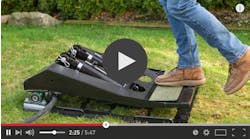On the third Monday of every month, we are going to quickly recap three vastly different news stories from the 3D printing industry. We hope to show you this technology has the ability to alter not only how things are made, but how we live. At the very least, we’ll give you something to talk about at the dinner table or your next party.
Of Mice and Men
Thyroid disorders affect 20 million Americans, according to the American Thyroid Association, with instances of cancer on the rise. A conventional thyroid transplant would leave a patient open to rejection or infection, but this type of transplant uses “organ construct” built form the patient’s own stem cells mixed with a fibrin gell.
According to 3Dprint.com, the company’s chief science officer, Vladimir Mironov, says other organs such as kidneys could come as soon as 2018.
Need for SpeedBy 3D-printing all the metallic parts of a replica 1:2–scale Auto Union Type C Grand Prix racer, aka the “Silver Arrow,” Audi hopes to prove their sights are firmly set on additive manufacturing.
ThUsing a pint-sized Nazi-era racer to show Audi’s dedication to additive manufacturing is a bit underwhelming in the wake of other 3D printed car announcements.
In June, Divergent Microfactories unveiled the Blade, a sharp-looking machine which the San Francisco-based startup touts as the “the world’s first 3D printed supercar.”
Small-Scale Manufacturing
When a company combines nanotechnology and additive manufacturing, it’s bound to shake up in the engineering world, and that’s what Israeli company XJet hopes to do. The company showed off its Nano Metal Jetting technology, which dispenses liquid metal from a cartridge like ink to form objects quickly and cost effectively, at the Go4Isreal conference to entice investors.
“We allow manufacturers to skip the mold stage, saving them huge amounts of time and money,” Xjet CBO Dror Denai said. “All the specifications are made in the software, and when it’s time to print, our nano-based metals are created according to those specifications.”
The big thing to note here is that much of the team, including CEO Hanan Gothait, comes from Objet, which developed an ink-based process for plastics.
Stainless steel will be the first to become available. Look for the cartridges and printer to be released next year.











